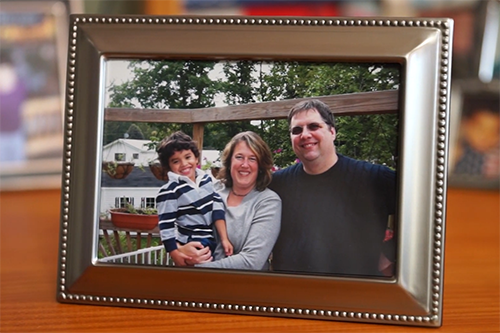Peter Jaworski Story
Find care now
If you are experiencing a medical emergency, please call 911 or seek care at an emergency room.
How proton therapy treated a brain tumor and saved a patient’s eyesight.

Peter Jaworski beat cancer once in 2001, when he went through a successful but difficult surgery to remove a brain tumor. When the tumor returned in 2019, he was dreading the possibility of a second surgery which would require him to be out of work for nine months and many potential complications. So, he looked into other options and discovered proton therapy.
Being an engineer by training, I was definitely planning to do my research, and I was just thrilled to find out MedStar Georgetown University Hospital was one of the leading proton therapy centers in the nation,” Peter says. “At that point, I was like – ‘sign me up. I’m ready to go.’ That sounded like an awesome option to me.”
Brian Collins, MD, medical director of the Department of Radiation Medicine at MedStar Georgetown, was Peter’s doctor. He shared that MedStar Georgetown has the best and newest proton therapy technology available – with HYPSERSCANTM – which shapes protons more extensively than any other system, providing the best dose distribution available especially for brain tumors.
“It was a challenging case because the tumor was abutting the optic chiasm. That is important because if we damage the optic chiasm, the patient loses the ability to see,” Dr. Collins explains. “But we were lucky. We have proton therapy, and we could treat this difficult tumor with minimal side effects.”
Because the radiation molds to the shape of the tumor, proton therapy involves less radiation than other conventional therapies. That lowers the risk of radiation-induced secondary cancers and other side effects. It was also far less disruptive on Peter’s daily life than surgery. He received the therapy on an outpatient basis – 30 treatments over the course of six weeks.
“He was a great patient. Each day, we gave a small amount of radiation that was actually able to damage his tumor without harming his optic chiasm,” Dr. Collins explains. “Older technologies would have had difficulty treating his tumor without significant risks. In conventional radiation, larger areas of the brain are irradiated. But with proton therapy, the beam stops at the target, and we deliver half as much radiation. It has minimal acute side effects and causes less long-term damage, significantly less.”
At a six week follow up, brain scans showed Peter’s tumor was no longer compressing the optic chiasm. Peter says proton therapy saved his eyesight and his life.
“It’s a miracle. It’s almost like Star Trek. You literally go into a machine and protons targets something deep inside your body that shouldn’t be there. It’s amazing how far technology has come. It’s incredible,” Peter says. “For anyone who is a candidate for this type of treatment, I would definitely recommend it. My son is 13. I’m looking forward to being his dad. My wife and I have plans to have a long and happy life. So, I thank Dr. Collins and his staff for that opportunity. He’s amazing, and I’m absolutely grateful.”













